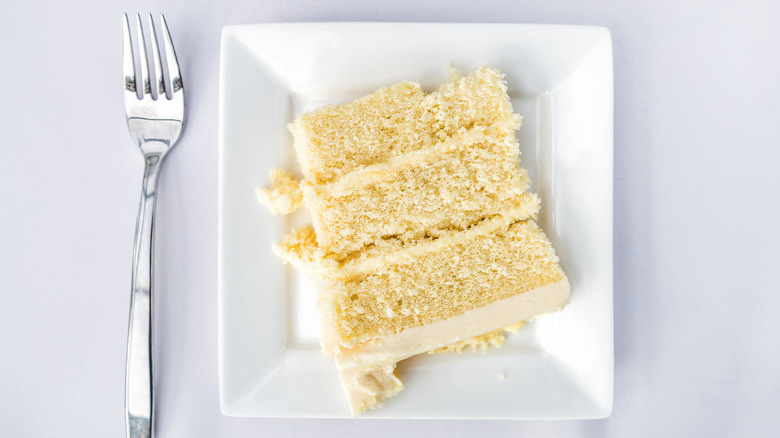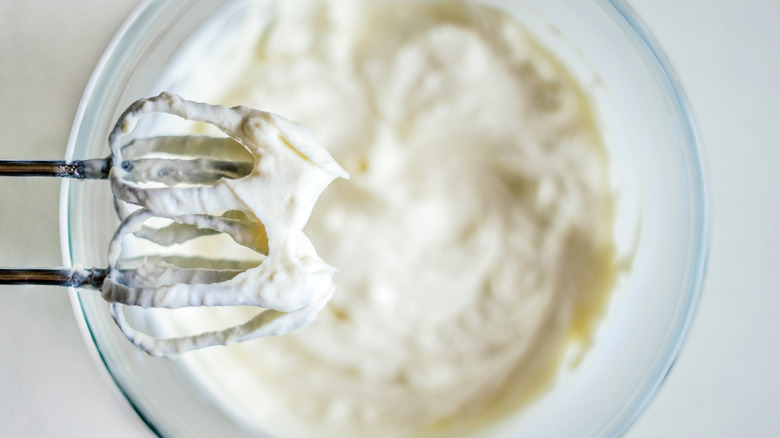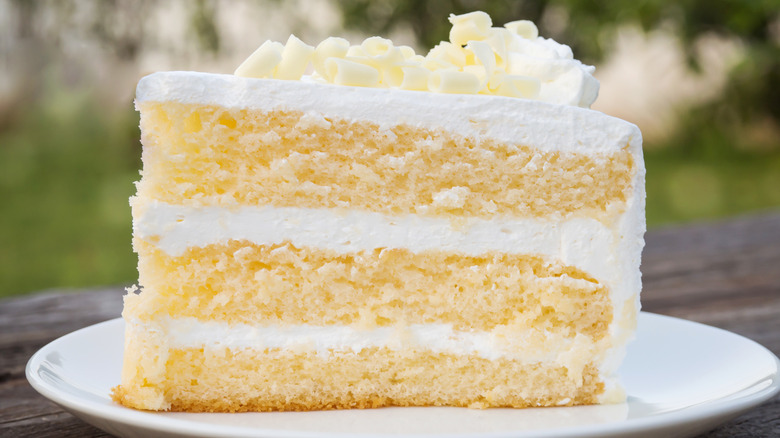What's The Real Difference Between White And Vanilla Cake?
Cakes are desserts that are common at birthday parties, weddings, and other significant milestone events. They're delicious and versatile, with tons of different flavors that you can choose from. While it's always fun to make a cake from scratch, you can save time by making this dessert from a store-bought cake mix. If you head to the grocery store to pick up one of these boxes, however, you may find yourself confronted with packages of white cake and vanilla cake. So, what makes these two desserts different?
While at first glance the treats might look the same, there are actually a few subtle differences between them. Vanilla cake refers to cakes that have a vanilla flavor, just as the name might suggest. It's more of a catch-all phrase and can actually include white cakes under its umbrella. White cakes, on the other hand, contain specific ingredients that give them a distinctive light, white color and spongy texture. They're often still flavored with vanilla, although this ingredient isn't necessarily the star of the show. So, while a white cake can have a vanilla flavor, a vanilla cake isn't always white.
What sets white cake apart?
White cake has a few factors that make it special. For starters, rather than containing whole eggs, white cake only contains egg whites. The result is that you get a lighter-colored batter while also leading to an airy texture in your baked product. Besides the egg whites, white cakes also usually call for cake flour as opposed to the usual all-purpose flour most of us have in our kitchen cupboards. This flour has less protein, a white color, and contains cornstarch. The result is that you wind up with a thinner batter and a lighter crumb.
White cakes also sometimes rely on oil or a mixture of butter and shortening as the fat source in the recipe. This can help prevent coloring from the butter, keeping the batter a light, white color. Similarly, you may find people who use clear vanilla extracts rather than the typical brown-toned liquid to help prevent altering the hue of the cake. All these factors create a beautiful, white sponge that lives up to its name.
What about yellow cake?
Besides vanilla and white cake, another similar sponge you might come across is yellow cake. Once again, this sweet has its own unique characteristics. For one thing, this cake stands out because, unlike white cake, which uses only egg whites, yellow cake calls for whole eggs. Additionally, yellow cake tends to use butter as the fat source in the batter.
The combination of these two ingredients helps give yellow cake its signature color without requiring any additional coloring agents. And it helps give the cake a flavor that's neutral while also creating a rich, tender dessert. On top of that, these cakes tend to be a little heavier and more moist than white cakes, in part because of the use of egg yolk in them. Plus, they're less fussy to make since you don't have to worry about separating your eggs.
Just like white cake, yellow cake often has vanilla extract in it. So, it's technically a type of vanilla cake as well. However, these cakes have a distinctive taste because the egg yolks give them a more custardy flavor. Whether you go for vanilla, white, or yellow cake will depend on what kind of texture and flavor you want to achieve, as well as whether you want a light white look or a vibrant yellow appearance.


